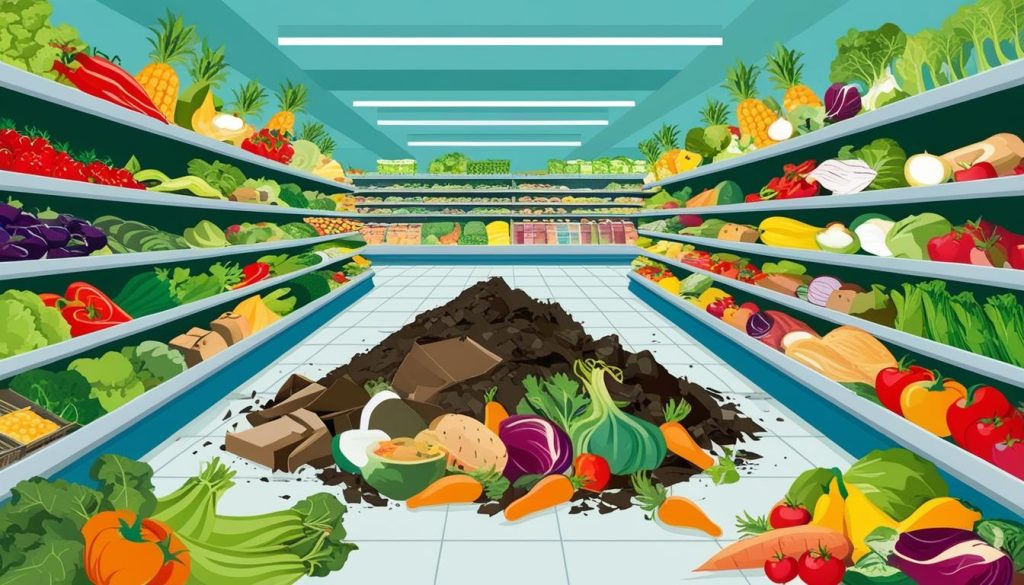As Thanksgiving nears, supermarkets thrive but face a challenge with huge food waste. Innovative practices and consumer habits surge as potential solutions.
As the Thanksgiving holiday approaches, supermarkets across the nation are bustling with shoppers preparing for festive gatherings. The aisles laden with produce, including traditionally popular items such as onions, sweet potatoes, and an array of fruits and vegetables, create a vibrant display designed to entice. However, this abundance comes with a significant downside. An estimated 143 million kilogrammes, amounting to $556 million worth of groceries, will likely end up in landfill following the celebrations, reflecting a broader issue of food waste observed globally.
According to the United Nations, approximately one-fifth of all food produced annually is wasted, contributing to 8 to 10 per cent of global greenhouse gas emissions. This reality highlights the need for more sustainable consumption practices. In response to this challenge, cities like New York are implementing measures such as mandatory composting, while organisations like City Harvest facilitate the donation of surplus food from restaurants and grocers to those in need.
However, tackling food waste goes beyond consumer responsibility; companies are starting to harness technological advancements and shifting consumer demands to develop sustainable practices that could mitigate waste. One innovative approach comes from the Irish start-up Senoptica, which has developed low-cost sensors that can be printed directly onto beef packaging. These sensors monitor oxygen levels within the packaging, helping to identify meat that may be at risk of spoilage due to compromised seals. If a leak is detected, the product can be rewrapped immediately, while items that show a decline in oxygen levels can be discounted for quick sale, thereby reducing waste.
The first real-world testing of these sensors is anticipated in the spring of 2024, in collaboration with a significant online grocer, alongside potential partnerships with traditional retailers in the pipeline.
Additionally, investment firms like Butterfly Equity are exploring avenues such as “upcycling,” which involves transforming food byproducts into new products. Their acquisition of Actus Nutrition demonstrates this strategy effectively. Actus collects whey byproducts from midsized dairies, which previously could not process these leftovers, and converts them into nutritional ingredients such as protein powder. This process not only generates new revenue streams but also addresses the growing demand for protein supplements, particularly as interest in weight loss and diabetes medications accelerates.
Another Butterfly Equity initiative, Chosen Foods, has turned its focus on overripe avocados that are no longer suitable for sale. Instead of being discarded, these avocados are now processed into a cooking oil, which is gaining traction due to its high smoke point and appealing flavour. This approach has multiple benefits, providing farmers with extra income while also optimising the extensive resources already utilised in avocado farming. The proximity of oil processing plants to avocado farms further enhances the efficiency of this system.
Despite these promising initiatives, the task of fostering consumer interest in sustainability faces challenges. A recent survey by Sodexo revealed that the positive perception of sustainable food options has declined by 6 percentage points globally, with significant drops in western economies grappling with inflation. Furthermore, consumers are increasingly prioritising price over environmental considerations when making food purchasing decisions.
In this evolving landscape, companies aiming to profit from sustainable practices must look beyond mere appeal to idealism, reflecting a need to integrate economic viability with environmental stewardship. The age-old adage, “waste not, want not,” could be evolving into a new mantra: “waste less, earn more,” indicating a shift towards a more sustainable and profitable future in food retail and production.
Source: Noah Wire Services
- https://refed.org/articles/this-thanksgiving-316-million-pounds-of-food-will-be-wasted-across-the-u-s/ – Corroborates the estimate of 316 million pounds of food wasted on Thanksgiving, valued at $556 million, and the environmental and economic impacts of this waste.
- https://refed.org/articles/americans-will-waste-nearly-312-million-pounds-of-food-this-thanksgiving/ – Supports the estimate of food waste during Thanksgiving, the water usage, and the carbon footprint associated with the wasted food.
- https://www.des.nh.gov/news-and-media/blog/november-2023-your-turkey-belongs-your-plate-not-trash – Provides strategies to reduce food waste during Thanksgiving, including planning, using leftovers, and donating food to those in need.
- https://www.waste360.com/food-waste/here-s-how-to-curb-thanksgiving-food-waste-and-an-update-on-policies-to-tackle-waste-year-round – Discusses the importance of addressing food waste during holidays, the economic and environmental impacts, and policy initiatives to reduce waste.
- https://scotscoop.com/thanksgiving-food-leads-to-excess-waste/ – Highlights the issue of food waste on Thanksgiving, its environmental and economic consequences, and student perspectives on reducing waste.
- https://www.unep.org/resources/publication/food-waste-index-report-2021 – Although not directly mentioned, this link from the United Nations Environment Programme supports the global context of food waste contributing to greenhouse gas emissions.
- https://www.cityharvest.org/ – City Harvest’s website explains their role in facilitating the donation of surplus food to those in need, aligning with the article’s mention of similar initiatives.
- https://www.nyc.gov/site/dsny/waste/disposal/compost.nyc – New York City’s composting program is an example of municipal measures to address food waste, as mentioned in the article.
- https://www.senoptica.com/ – Senoptica’s website details their innovative sensors for monitoring food packaging, which is discussed in the article as a method to reduce waste.
- https://butterflyequity.com/ – Butterfly Equity’s website provides information on their investments in sustainable food practices, such as upcycling and using food byproducts, as described in the article.
- https://www.sodexo.com/en/sustainability/survey-on-sustainable-food-options – Sodexo’s survey on sustainable food options supports the article’s mention of declining consumer interest in sustainable food due to economic factors.


